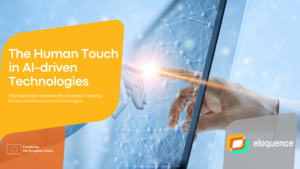Even though the new technology is more advanced compared to the one 10 years ago, AI still lacks the decisions that may come from people’s consciences, especially when it comes to necessary services like an emergency. This blog closely observes the necessity of placing human interferences on AI technologies to get desired results on the dependability, ethics and safety of the pertinent technologies applicable to all users.
The Limitation of AI in the 2024
AI is being successfully incorporated into turnkey safety-related application domains regarding the speed at which it processes data and delivers accurate results. Nowadays, AI is implemented to forecast disasters, including floods and wildfires, to combat them and prevent their consequences as soon and effectively as possible.
The application generated by artificial intelligence can create wrong decisions, particularly concerning the context or some unforeseeable circumstance. Thus, it is necessary to have some sort of check and balance – the interference of human beings. Following the glair.ai blog, these are the key limitations of AI:
- Inaccurate Data Analysis: The consistency of data is one of the key obstacles to the implementation of AI. Businesses trying to benefit from AI face difficulties since it is frequently fragmented, inconsistent, and of poor quality.
- Bias in Algorithmic: Algorithms are a collection of guidelines that a computer follows to execute a certain task. These guidelines may or may not have been authored by a human programmer. However, businesses cannot rely on algorithms if they are flawed or prejudiced since then you would only see unfavourable outcomes.
- Relatively Expensive (Cost vs Benefits): Smart technologies can be expensive due to their complexity, and businesses may also incur additional fees for continuous maintenance, repairs and computational costs associated with building data models, etc.
- No Ethics and Emotionless: There is no denying that robots are superior to humans when functioning effectively, but it is also true that human connections, which form the basis of teams, cannot be replaced by computers. The two most crucial aspects of human nature are ethics and morality, but it is difficult to combine both of these into artificial intelligence.
- Adversarial Attacks: AI isn’t particularly suited to adapt to changes in circumstances because it isn’t human. This inability to adapt draws attention to a serious security weakness that has not yet been adequately fixed.
The Role of Human Oversight
As mentioned above, human supervision ensures that artificial intelligence is used correctly, primarily in those areas that can be potentially dangerous. Thus, in emergency services that are related to healthcare, the use of AI and human supervision presents the most efficient and ethical approach. AI systems can analyze data and select actions as fast as possible while human operators can responsibly make the right decisions when.
“AI can help us make better decisions, but it’s the human element that ensures those decisions are right.” – Dr. Jane Doe, Emergency Services Specialist.
Despite the challenges, the future picture of the world will probably be the tight synergy between artificial intelligence and people who share the foremost global problems, ranging from disasters to diseases to ascertain that each decision is rational, optimal, humanistic, and equitable at the same time.
To wrap up, AI does not equal to the submission of humanity to unseen forces but represents the unity of humanity and AI. Integrating the good aspects of both, it is possible to develop better systems that are not just precise and productive but also moral and reliable.
In the ELOQUENCE project, experts in ethics and law will provide guidance on the ethical and legal implications of the project’s activities. This includes considerations around privacy, consent, gender or other bias, and data protection. Partner SLU will integrate social sciences and humanities perspectives into its ongoing AI research and development. The project also conducts societal impact assessments to evaluate the potential social and cultural implications of the tools being developed. These assessments help ensure that the project’s outputs are sensitive to cultural and social factors and do not exacerbate existing inequalities.
The whole idea behind the current innovations is to ensure responsible and rightful decision-making in societal affairs in order to increase the capacity to manage crises and emergencies. Therefore, human cognition of AI technology is crucial, no matter if the person is an AI professional, developer, or just a fan.


